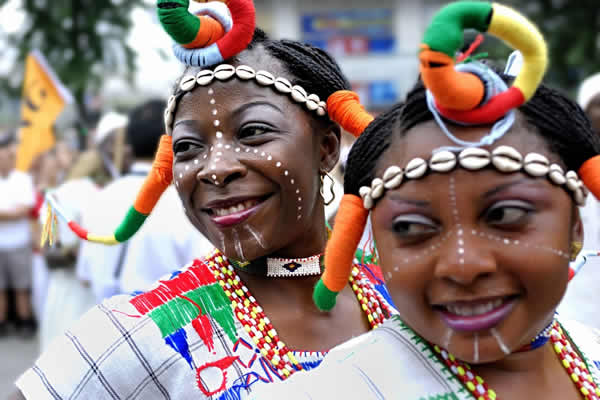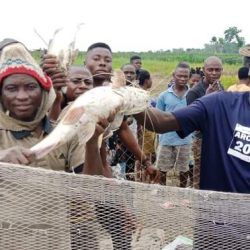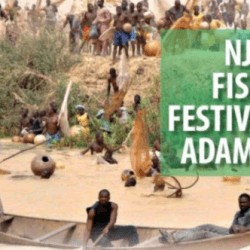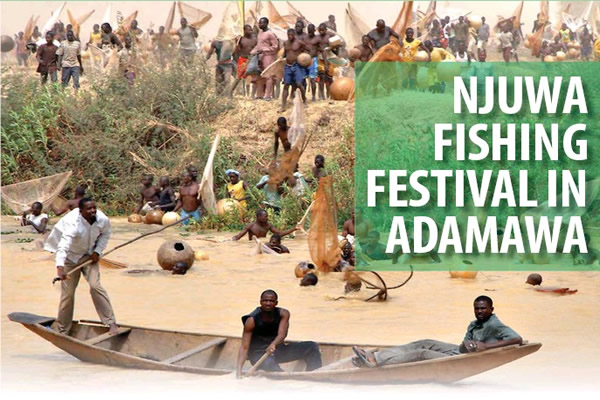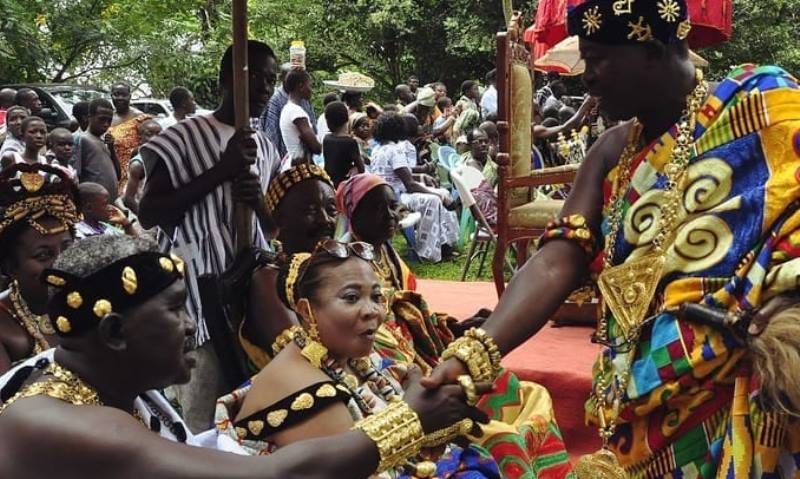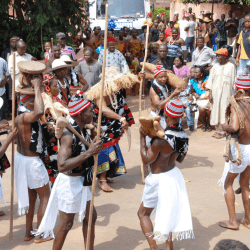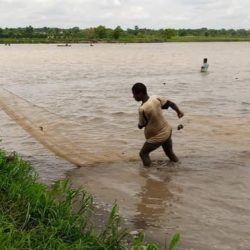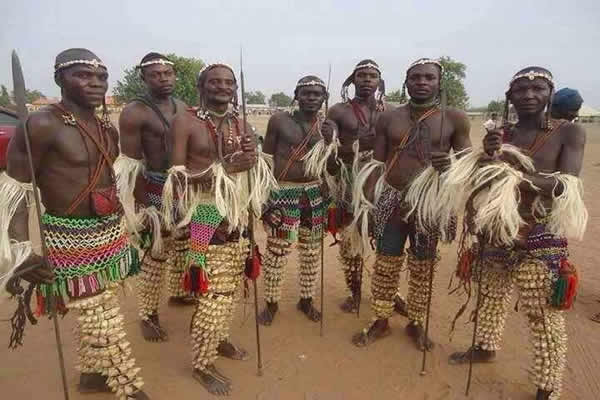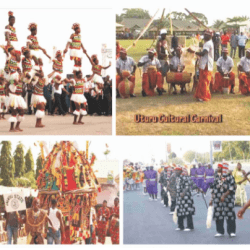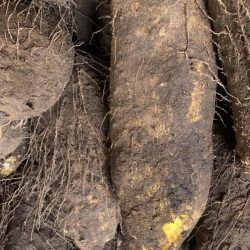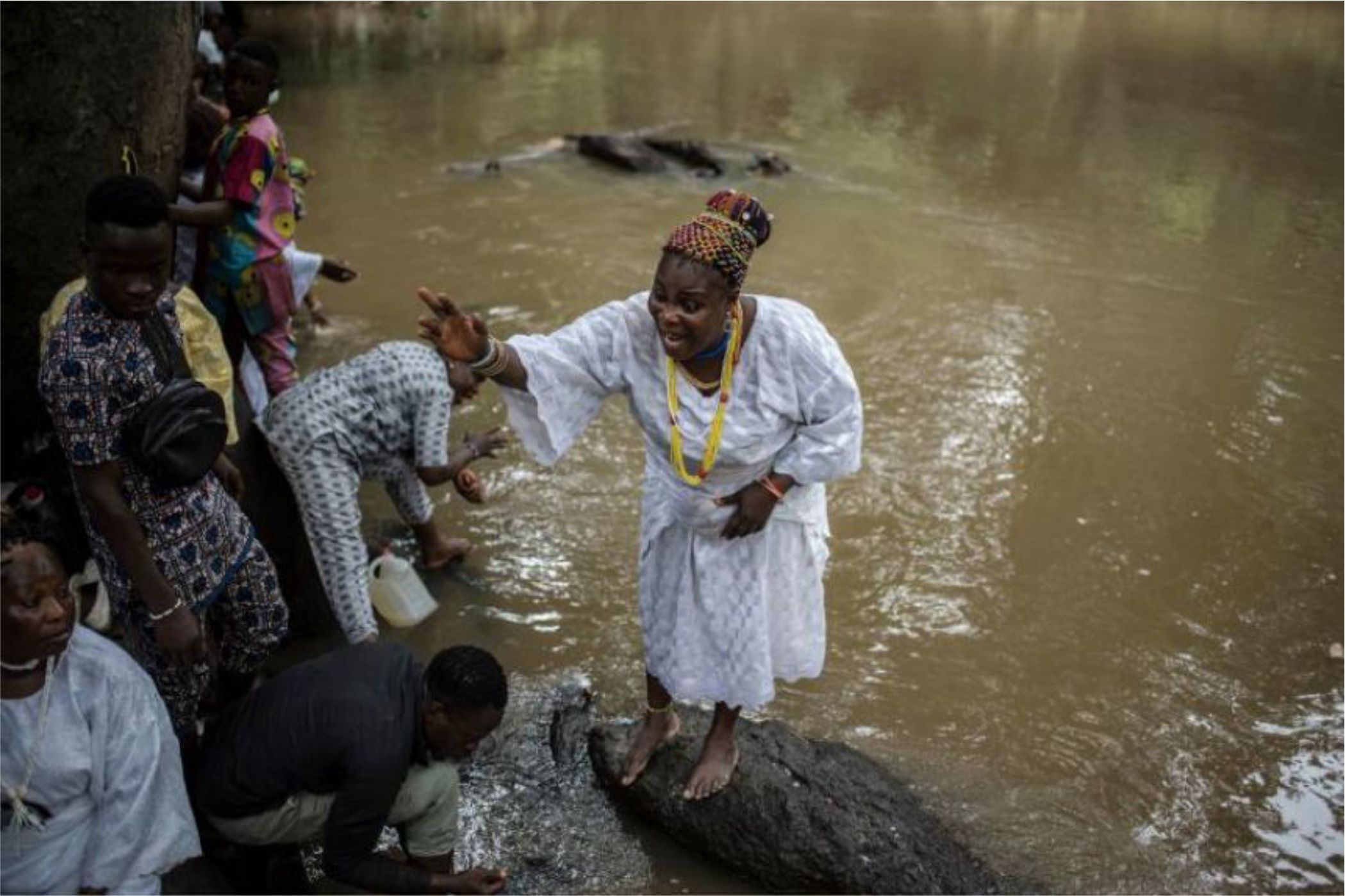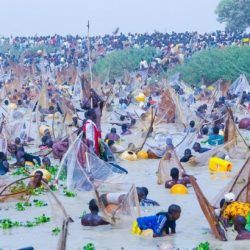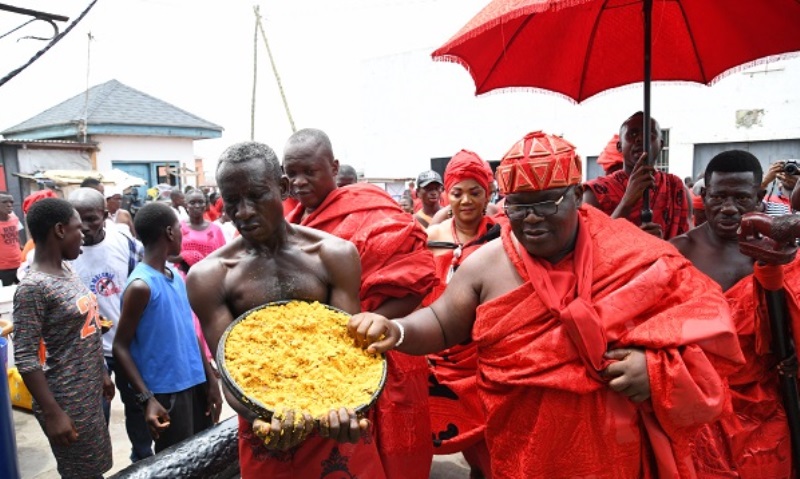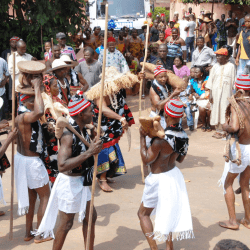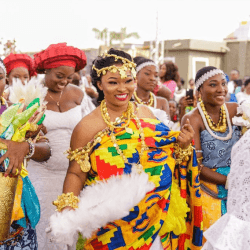The Ayakoromo Olorogun masquerade festival of 25th January 2003 throws up the fact that Ayakoromo is the only town in Burutu local government council that gives culture its sacred place despite the sweeping western fever that plagues thousands. However the most memorable thing about this year’s Olorogun masquerade festival is that it lulls all the spectators to the conclusion that the myth of “miraculous disappearance” usually associated with OLOROGUN which some thomasses tend to dispute, is in fact not a fabrication of Ayakoromo people.

The famous Ayakoromo Olorogun festival started in 1937. The festival was founded by a man named Ayei. Ayei was a fisherman distinguished by commitment to his trade. In one of his usual fishing sessions, he caught a big fish that struck him strange and awe-inspiring. So he unentangled the fish, led it into the sea and rowed home. Few days later Mr. Ayei became ill and when the oracles were consulted, it revealed that the strange fish (later named OLOROGUN by the oracles) he caught and led go of was the offshoot of his illness.
The demand of the fish was that it should be beautifully carved and venerated in the mould of a masquerade festival. Mr. Ayei carved the fish as he saw it and Olorogun became the cynosure of Ayakoromo Okosutu masquerade cult. Olorogun is a very agile and smart machete-wielding masquerade. Whenever Olorogun comes out, masked, thousand spectators often go home with machete wounds. And because the oracles predicted that the founder, Mr. Ayei, could be macheted into pieces by Olorogun in its state of possession, he was often sneaked to a neigbouring village in the duration of the, Olorogun day. This “sneaking tradition” was religiously followed until Mr. Ayei went to the great beyond at a very ripe age.
Before Olorogun sweeps the arena in its awe-inspiring and inscrutable display, certain rituals precede it. The first ritual religiously kept is then BEINIKAMAI ritual. BEININ KAMAI ritual is in stages; the fit stage of BEINI KAMAI ritual is carried out by selected members of OKOSOTU masquerade cult. This ritual has to do with sprinkling of sugar, biscuit, Fanta and other sweet things on water in River Forcados. And as soon as the sprinkling is done, mighty fishes are seen eating the offering. Traditionally, this is done to recognise the roles of the water spirits in the olorogun festival.
The second stage of BEINI KAMAI ritural is carried out by the possessed wives of Olorogun. There are certain women possessed by olorogun. It is customarily the duty of .such women to pay homage to the water spirits in a sprinkling exercise because Olorogun is from the sea. When the offerings of the women are accepted, different species of fishes come to the surface and eat, wagging their fins in a very slow motion. At such time, the women experience momentary possession struggling to go into the sea and be transformed into water spirit. This ritual is characterised by light drumming, singing and clapping of hands, while the wives of Olorogun grow ecstatic in their state of possession, strong people are stationed to cordon them off.
The drumming, choral singing and BEINI KAMA ritual is usually taken on by the priest of AKASUWO in their third stage. It is this third stage that attracts the largest crowd of spectators. AKASUWO is a god that has power to predict accurately the dramatic atrocities/achievements of Olorogun in its outing on consultation. If the priest foresees danger, then a ritual is carried out to tone down the predicted destructive exploits of Olorogun, it is the ; information from the,priest of Akasuwo that alerts the spectators on the expected dramatic exploit of Olorogun.
In the third stage of BEINI KAMAI, two processions of BINI KAMI, twop rocessions of men are formed, the priest ofAKASUWO in the centre holding a plate that contains biscuit, sugar, groundnut and fanta. All the men in the processions, attired in red costumes, break into songs that excite the priest of AKASUWO and move him to the peak of possession. In a solemn procession the men move slowly to the bank of River Forcados and stand singing and clapping. Then the priest of Akasuwo wades a little into the River, launches into mumbo-jumboo and dips the plate in water and immediately fishes “clatter” up excited – which is a recognition of acceptance of the offering.
The priest begins to sway to an fro on the bank of River Forcados mumbling. As he wades into River Forcados attracted by the drums of the water spirits in his peak of possession, he is held home by selected men in the processions. The next ritual that heralds the coming of Olorogun is the EYEIBI ritual led by the priest of AKASUWO. For the purpose of EYEIBI ritual, two processions are formed besides a mammoth crowd of spectators that follows it. In the centre of the processions are the god, AKASUWO, the priest and two other persons that assist the priest. One of the two assistants carries AKASUWO, a portable god, and the other pours Ogogoro drink into the glass for the priest from time to time for the consultation of AKASUWO.
As the processions break into corresponding ORU songs, the priest has a sharp knife and a piece of plantain in his hand. Already possessed, he pours Ogogoro on the ground three times, launches into mumbo-jumbo, slices some pieces off the plantain and tells the mammoth crowd the range of destruction Olorogun will dramatically cause – specifically the number of spectators that will go home with machete wounds. This EYEIBI ritual is carried out openly in the street of the town from the beginning of Ayakoromo to the extreme. EYEIBI ritual is usually followed immediately by KIRI- AFIN andAGBORO-GBEN rituals. In KIRI-AFIN rituals, a beautifully attired masquerade sweeps the length and the breath of the town using a broom.
This is traditionally done to ward off any evil that awaits the coming of OLOROGUN. The AGBORO-GBEN ritual consists of throwing of gari mixed with red oil across the length and breath of the town by a gorgeously dressed masquerade. This is done symbolically to give blessing to the town so that in the duration of the Olorogun festival nothing bad happens. With the accomplishment of the above rituals, the coming of Ologorun is enthusiastically awaited by the spectators. All the spectators – boys, girls, men and women are dressed in red costumes to mark the spirit of the festival.
At this time the spectators that occupy the whole street are seen calling the praise – name of Olorogun-ALABENIKOLOKOLO- ecstatically. The humming of ASlYEI ASIYEI usually rends the air when Olorogun is on the way down the bank of River Focardos held by selected men of the OKOSOTU masquerade group. As Olorogun is being held towards the bank of River Forcados, the spectators become more excited; they begin to run helter-skelter towards the bank of the River. Even the spectators on boats in River Forcados are seen struggling to catch sight of the “water sprinkling ritual” on the bank of the River.
Gingerly head to the bank of River Forcados, some water is sprinkled on the head-piece in a counted number of times and led go of When the held Olorogun masquerade is released after “Water sprinkling ritual”, Olorogun remains in its bent position for a time, suddenly shakes the head-piece in quick succession producing interesting jingling note to the admiration of the spectators who in turn enthusiastically call its praise-name (ALABENIKOLOKOLO) in appreciative gesture. Armed with a sharp machete and bottles, Olorogun begins to display dramatically to the admiration of spectators. Though spectator often keep a respectable distance, Ologorun is so smart and agile that it often out-runs and out-wites its spectators and give them bottle and machete wounds.
Drumming often rises to the crescendo whenever Olorogun is on display because it is believed that the water spirit equally have a target to draw it to the sea with drumming. Where the drumming of the water spirits appeal more to Olorogun, it disappears into the sea without a trace. The OKOSOTU masquerade cult is always wary of this. It is believed that the drums from the sea are more appealing than the drumming of AWOROWO and EZON-OWEI, the two exceptionally talented drummers, on the first outing of Olorogun. So as the drumming of the water spirits begins to invite it, OLOROGUN is dramatically attracked to the bank of the River swaying in a way that sends spectators shouting ALABENIKOLOKOLO ecstatically.
AS OLOROGUN sways dramatically on the bank of River Forcados, Ezon-Owei and Aworowo, the dependable drummers, are asked to increase their tempo above that of the water spirits. Undetected, OLOROGUN begins to wade into the water beyond the bamboo pole barricade on the River. As Olorogun gets submerged almost to the head-piece like a submarine, some selected men of Okosotu masquerade cult swoop on it and drag it to dry land humming Igbon, Igbon, Igbon. The tussle between the selected men and the water spirits is such a stiff spectacle that holds the spectators spellbound. Having successfully dragged OLOROGUN out of the River to the “masquerade bush”, it is billed to reappear on the following day.
Nigeria
Nigeria is a country in Africa, a regional power on the continent and an emerging power on the international scene.
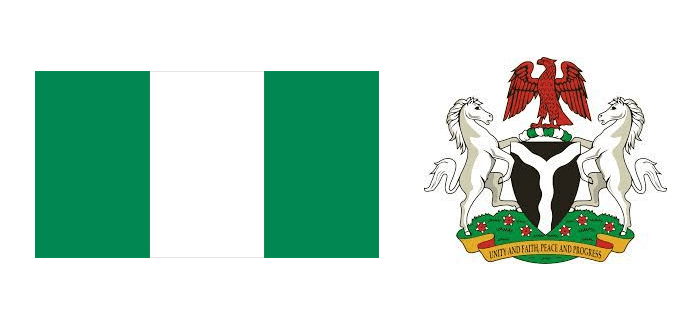
It has 36 states and a Federal Capital Territory, Abuja.
Having being divided into states, the country is further divided into 774 Local Government Areas (LGAs).
The LGAs are under the control of their respective states.
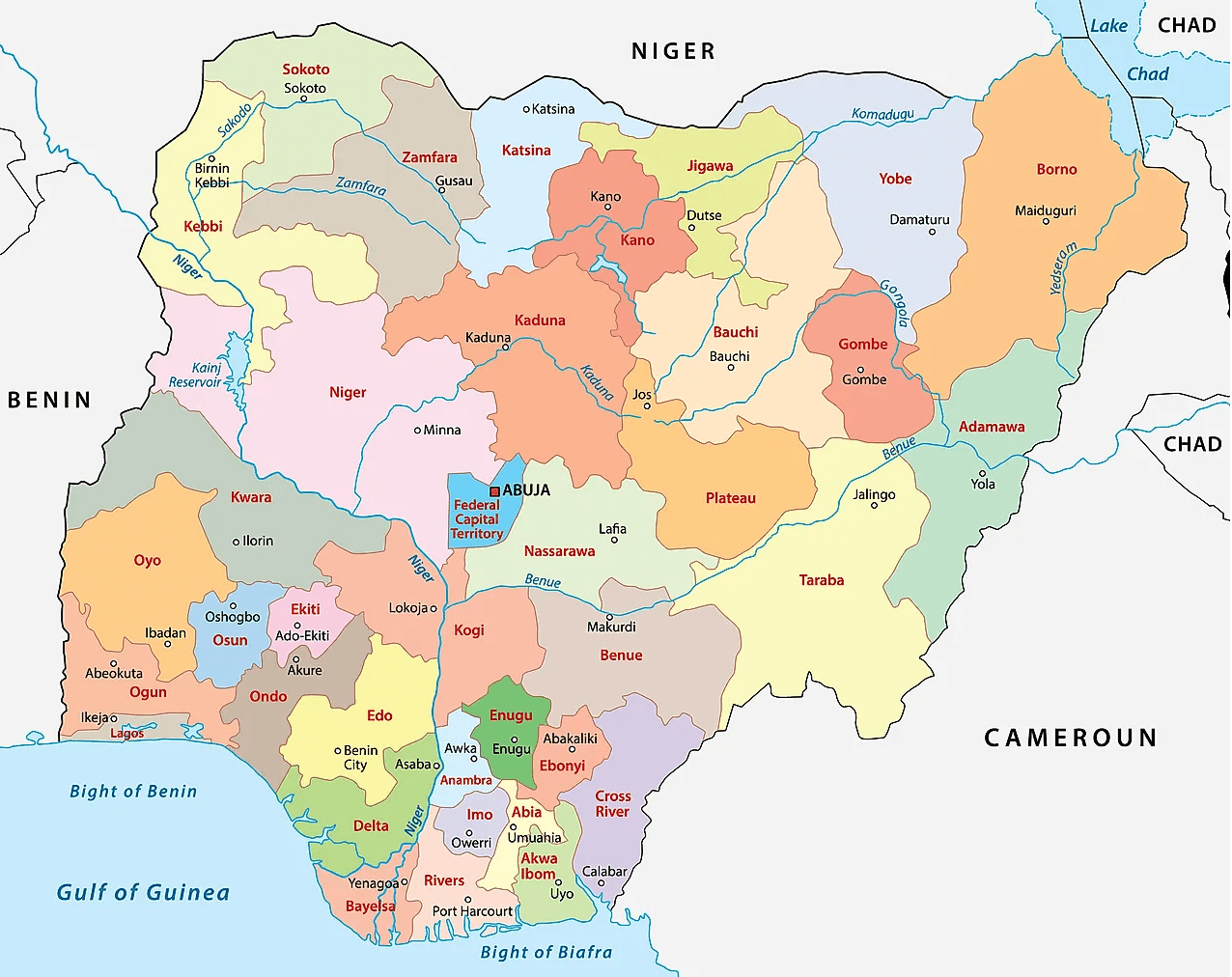
The country has the largest economy in Africa.
Nigeria’s population is over 230 million, making it number 1 most populated country in Africa, and number 6 in the world.

It covers an area of 923,769 square kilometres (356,669 sq mi).
It is situated between the Sahel to the north and the Gulf of Guinea to the south in the Atlantic Ocean.

Nigeria borders Niger in the north, Chad in the northeast, Cameroon in the east, and Benin in the west.
It is often referred to as the Giant of Africa owing to its large population and economy and is considered to be an emerging market by the World Bank.

However, the country ranks very low in the Human Development Index and remains one of the most corrupt nations in the world.

The largest city in Nigeria is Lagos, one of the largest metropolitan areas in the world and the largest in Africa.

Nigeria is a multinational state inhabited by more than 250 ethnic groups speaking 500 distinct languages, all identifying with a wide variety of cultures.

The official language is English, chosen to facilitate linguistic unity at the national level.
Nigeria is a founding member of AU (African Union) and a member of other international organizations including UN (United Nations), Commonwealth of Nations and ECOWAS (Economic Community of West African States).
